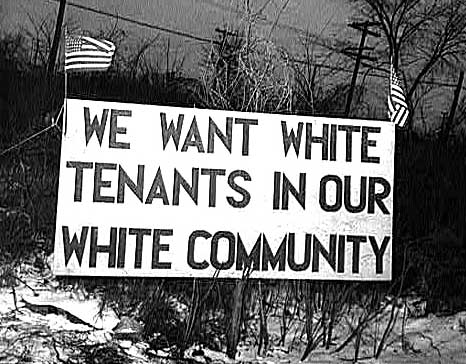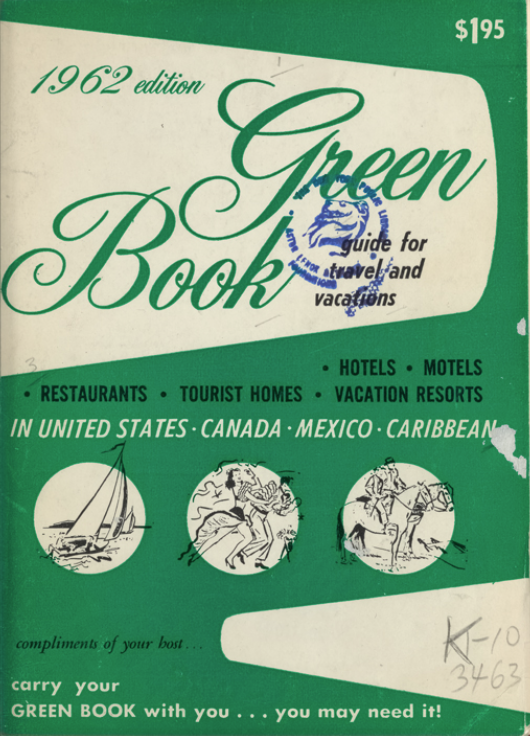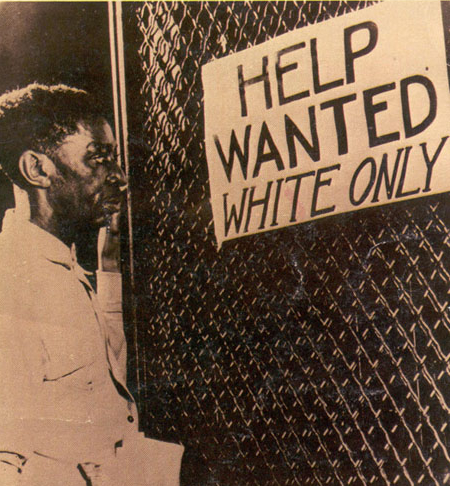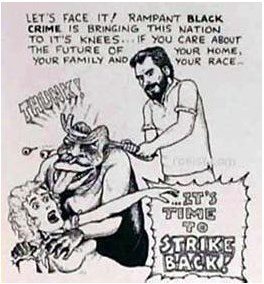Sundown Towns: Racial Segregation Past and Present
Share
Breaking News!
Today's news and culture by Black and other reporters in the Black and mainstream media.
Ways to Support ABHM?
Scholar-Griots: James W. Loewen, PhD; Fran Kaplan, EdD; and Robert Smith, PhD
Photo Editor: Fran Kaplan

“Is it true that ‘Anna’ stands for ‘Ain’t No Niggers Allowed’?” I asked at the convenience store in Anna, Illinois, where I had stopped to buy coffee. “Yes,” the clerk replied. “That’s sad, isn’t it,” she added, distancing herself from the policy. And she went on to assure me, “That all happened a long time ago.” “I understand [racial exclusion] is still going on?” I asked. “Yes,” she replied. “That’s sad.” — conversation with clerk, Anna, Illinois, October 2001.
– James W. Loewen, Sundown Towns: A Hidden Dimension of American Racism (Touchstone, 2006), 3.
Anna and Jonesboro are twin towns, population 7,000, in southern Illinois. In 1909, after a “spectacle lynching,” Anna and Jonesboro expelled their African Americans. Both cities have been all-white ever since. It is common knowledge that black people are not allowed to live there. Such places are often called “sundown towns,” owing to the signs formerly posted at their city limits – signs that usually said “Nigger, Don’t Let the Sun Go Down on You in __.” Anna-Jonesboro still had such signs in the 1970s.
Sundown Towns Are Almost Everywhere

Sundown towns highlighted in orange on this map represent a partial listing of those found in Wisconsin. Research is ongoing. Image courtesy James Loewen.
A sundown town is a community that for decades kept non-whites from living in it and was thus “all-white” on purpose. Some allowed a non-white household or two as an exception. Anna and Jonesboro are not unique or even unusual. Beginning in about 1890 and continuing until 1968, white Americans established thousands of towns across the United States for whites only. Many towns drove out their black populations, then posted sundown signs. Others passed laws barring African Americans after dark or prohibiting them from owning or renting property. Still others just harassed and even killed those who violated the custom. Some sundown towns also kept out Jews, Chinese, Mexicans, Native Americans, or other groups.
Sundown towns range in size from tiny villages to cities. There are also many “sundown suburbs” and neighborhoods – and even entire counties. Sundown communities also range from rich to poor. Outside the traditional South – where sundown towns are rare – probably a majority of all incorporated places kept out African Americans. For example, in 1970, 71% Illinois towns with over 1000 people, for example, had been all-white in census after census.

A sign in Detroit, Michigan, where a race riot took place in 1943.
This History Has Been Hidden in Plain Sight
Even though sundown towns were everywhere, there was almost no information on the topic until sociology professor Jim Loewen researched and wrote about it. Most white Americans have no idea such communities exist, or they think such places exist mainly in the Deep South. Ironically, the Deep South has almost no sundown towns. Mississippi, for instance, has no more than 6, while Illinois has at least 456. Historians in sundown communities do not discuss this, because it would reflect badly on their communities.
Why Sundown Towns Arose
After slavery and the Civil War ended in 1865, blacks began moving everywhere – for about twenty-five years. Most, however, were still unable to leave the South. Once Reconstruction ended, southern states immediately set up a system that looked a lot like slavery. This system became known as “Jim Crow.” Under Jim Crow, blacks could not vote. They would not be accommodated at restaurants, parks, hotels, or schools used by whites.  Even streetcars and railroad waiting rooms now isolated blacks in separate sections. Lynchings and other forms of violence against blacks rose to their highest point.
Even streetcars and railroad waiting rooms now isolated blacks in separate sections. Lynchings and other forms of violence against blacks rose to their highest point.
Most Americans have no idea how much race relations worsened between 1890 and the 1930s – and not just in the South. In fact, black Americans were the targets of racial violence and discrimination in the North, East, and West as well. Still, there was a greater opportunity for family-supporting jobs and a better life outside the South, so millions of blacks left in one of the largest immigrations in history. This is known as the Great Migration – and it transformed America.
For example, African Americans reached every county of Montana. More than 400 lived in Michigan’s Upper Peninsula. City neighborhoods across the country were fairly integrated, too, even if black inhabitants were often servants or gardeners for their white neighbors. Between 1890 and the 1930s, however, all this changed.
By 1930, although its white population had increased by 75%, Michigan’s Upper Peninsula was home to only 331 African Americans, and 180 of them were inmates of the Marquette State Prison. Eleven Montana counties had no blacks at all. Across the country, city neighborhoods grew more and more segregated.
How Sundown Communities Were – and Are – Maintained
Sadly, the Great Migration sparked racism across the country. Whites feared black immigrants, and they established sundown towns around the country. Most sundown towns expelled their black residents, or agreed not to admit any, between 1890 and 1940. Sundown suburbs developed a little later – from 1900 and 1968.

Racial covenants, written agreements with white property owners, helped keep Seattle's black community confined to a ghetto. To see a sample of such an agreement, click the link on "covenant" to the left.
There were also race massacres in which white mobs attacked black neighborhoods, burning, looting, and killing. Across America, at least 50 towns, and probably many more than that, drove out their African American populations violently. At least 16 did so in Illinois alone. In the West, another 50 or more towns drove out their Chinese American populations. Many other sundown towns and suburbs used violence to keep out blacks or, sometimes, other minorities.
Instead of the “Promised Land,” black migrants found that Jim Crow had made the journey North, too. They were unable to settle in the kinds of small communities they had inhabited in the South. Instead, they were allowed to settle in only the oldest, most rundown neighborhoods in industrial cities. Whites fled to suburbs or parts of the cities with better housing.
In the 1930s-40s, the Federal government set up the FHA (Federal Housing Administration) program. This made home ownership affordable for millions of average Americans. However, property values and eligibility for loans were tied to race, so blacks got almost none of the loans. There were also written covenants and informal “gentlemen’s agreements” between realtors and sellers to exclude blacks from white neighborhoods. Owning a home in a valued neighborhood is how most average Americans save money and pass it on to their children. This critically important method of building family security and wealth was denied to most African Americans.
Race: The Power of An Illusion, Part 3 – The House You Live In
White families possess ten times the wealth of black families. How did this enormous wealth gap develop? A great deal of that wealth is in the equity of their homes. This video explains the government programs that created this situation.
Why Sundown Communities Matter Today

Such obvious signs may be out-of-fashion now, but the location of good family-supporting jobs far from where most African Americans are able to live has the same effect.
Sundown communities exist today. Most white people in this country live in all-white communities, attend all-white churches, and do not know a single black person well.
Residential segregation still makes it hard for even middle-class black people to escape the ghetto. When the white working and middle classes fled to the suburbs and exurbs, most industries and businesses moved there too. The bus systems used by the inner city residents do not go to these communities. This has left many African Americans unable to get family-supporting jobs.
This pattern of racial segregation in America has serious consequences for the well-being of millions of children. Most schools are still racially segregated, and those serving primarily black children are often underfunded. These schools struggle to educate many children stressed by the racism and poverty their families have suffered over generations. These super-stressed children often receive harsh punishments for petty misbehaviors, like throwing a lollipop (“battery”), tapping a pencil on a desk (“destruction of property”), and talking back (“disturbing the peace”). Students of color are punished more frequently and more harshly. For every white student suspended from school, four black students are pushed out.

An editorial cartoon archived at the Jim Crow Museum of Racist Memorabilia in Big Rapids, Michigan.
In the 1800-1900s, the pseudo-science of eugenics “proved” that blacks were brutes in order to justify slavery. For hundreds of years, white parents and society taught white children that blacks had, by nature, an inferior intelligence and character. Sadly, this white supremacist view persists today. With racial segregation, most white Americans get their only exposure to black American life through the distorted lens of many television news programs. These programs focus largely on sensationalized reports of black criminality.
Fortunately, with the rise of camera phone videos and social media, some white people are questioning the bias built into our criminal justice system. However, there is much work to be done to dismantle the attitudes and the serious economic, legal, and political problems caused by generations of forced racial segregation.
Click here to learn how to discover whether your town is a sundown town.
James W. Loewen, PhD is author of a gripping retelling of American history as it should be taught, Lies My Teacher Told Me, that has sold more than 1.3 million copies and inspires K-16 teachers to help students challenge, rather than memorize, their textbooks.
Jim taught at the University of Vermont and Tougaloo College in Mississippi. He now lives in Washington, D.C., continuing his research on how Americans remember their past. Lies Across America: What Our Historic Sites Get Wrong came out in 1999. Sundown Towns was named Distinguished Book of 2005. In Teaching What Really Happened (2009), he gives teachers solutions to the problems described in his earlier works.
In his presentations, Loewen asked thousands of Americans about the causes of the Civil War. Concerned by their replies, in 2010 he published The Confederate and Neo-Confederate Reader, setting the record straight in the Confederates' own words.
Dr. Loewen’s awards include the American Sociological Association’s Spivack and Cox-Johnson-Frazier Awards for scholarship in service to social justice; the American Book Award; the Oliver Cromwell Cox Award for Distinguished Anti-Racist Scholarship; and, the National Council for the Social Studies "Spirit of America" Award. He is a Distinguished Lecturer for the Organization of American Historians, Visiting Professor of Sociology at Catholic University in Washington, DC, and Visiting Professor of African-American Studies at the University of Illinois in Urbana/Champaign.
Robert S. Smith, Ph.D., is Associate Professor of History, Associate Vice Chancellor for Global Inclusion and Engagement, and Director of the Cultures and Communities Program at the University of Wisconsin-Milwaukee.
Smith is the author of the book Race, Labor and Civil Rights: Griggs v. Duke Power and the Struggle for Equal Employment Opportunity, his study of efforts by grassroots civil rights activists to garner better jobs and long overdue promotions. His research is particularly useful in its assessment of the outcomes of the Civil Rights Movement and the sustained efforts of longtime activists at promoting equality by mobilizing the civil rights laws of the mid-sixties.
Rob is the Resident Historian at America’s Black Holocaust Museum and co-curator of Lynching: An American Folkway, a recently published digital transmedia anthology.
Dr. Smith taught in the Africana Studies Department of the University of North Carolina-Charlotte and served as a consultant at the Levine Museum of the New South, where he helped revamp a permanent exhibit. He was also an invited scholar/expert for the North Carolina Humanities Council.
Fran Kaplan, EdD has been an educator, social worker, writer, and racial justice activist for nearly fifty years. She has developed and run both nonprofit and for profit organizations, including a women’s comprehensive health center, a farmworker self-help organization, and a trilingual training program for early childhood educators. Fran served as the international trainer-consultant for a global parenting education program and authored their Spanish-language instructional books, games, and videos.
Dr. Kaplan has also written and produced award-winning short and feature films, one of which is distributed by Warner Brothers Home Video. Her co-authored screenplay about the life of James Cameron won awards in eight national and regional competitions. She co-curated Lynching: An American Folkway, a comprehensive digital transmedia anthology published by Biblioboard for libraries and tablet users.
Over the years Fran has been recognized by various local and state organizations for promoting racial justice and providing leadership in children’s and human rights. Her current position as the coordinator of America’s Black Holocaust virtual Museum draws on her experiences as a researcher, writer, teacher, filmmaker, and organizational developer and community organizer.
Comments Are Welcome
Note: We moderate submissions in order to create a space for meaningful dialogue, a space where museum visitors – adults and youth –– can exchange informed, thoughtful, and relevant comments that add value to our exhibits.
Racial slurs, personal attacks, obscenity, profanity, and SHOUTING do not meet the above standard. Such comments are posted in the exhibit Hateful Speech. Commercial promotions, impersonations, and incoherent comments likewise fail to meet our goals, so will not be posted. Submissions longer than 120 words will be shortened.
See our full Comments Policy here.









[…] Sundown Towns Past and Present. A sundown town is a community that for decades kept non-whites from living in it and was thus “all-white” on purpose. [Article: approx. 8 min to read] […]
[…] many other municipalities in the U.S., Douglas County used to have a “sundown ordinance” that was enacted in 1917 and repealed in 1974. The ordinance required indigenous people and […]
How many deaths have been documented from sundown towns? What are the specs of documented assaults and murders, Is there a possibility these people are labeled as disappeared?!
[…] submitted by /u/masked-n-anonymous [link] […]
[…] Many other laws and policies prohibiting certain types of people from public space popped up in the books, such as Ugly Laws and Sundown Towns. […]
[…] Northern and Western towns and cities had “Sundown laws” stating that no black person could […]
[…] not only in Jim Crow South. Plenty of Northern and Western towns and cities had “Sundown laws” stating that no black person could be found within the city limits after […]
[…] only” signs were posted on bars, motels, and restaurants. Neighborhoods such as Queen Anne, Magnolia and West Seattle, operated as sundown towns where Blacks could not be there after dark or risked arrest, violence, and even death. Those […]
[…] Sundown ordinances were imposed across the U.S. during the Jim Crow era, which legalized racial segregation. If nonwhites were seen in town after sunset, they risked being arrested, beaten, or worse. […]
[…] Sundown ordinances were imposed across the U.S. during the Jim Crow era, which legalized racial segregation. If nonwhites were seen in town after sunset, they risked being arrested, beaten, or worse. […]
This was the good ole days and what needs to happen today. All blacks need to go back to Africa where they belong. America colonized Liberia for all blacks to leave America. The Bible forbids homosexuality and race mixing Sodom and Gomorrah evils
[…] we say that that’s just a little bit of our land that was left. But we had what were called Sundown Laws, where people of color could not be in any of the major cities after nighttime based on these […]
[…] In Loewen’s view the true nadir only began when Northern Republicans ceased supporting Southern blacks’ rights around 1890, and it lasted until the Second World War. This period followed the financial Panic of 1873 and a continuing decline in cotton prices. It overlapped with both the Gilded Age and the Progressive Era, and was characterized by the nationwide sundown town phenomenon. […]
[…] know how the Confederate white supremacist angle would play out in this story that took place in a sundown town like Tullahoma, that one website ranked the 9th-most racist town in Tennessee. But we obviously […]
[…] feel too intimidated to purchase land. Then there’s the risk of accidentally settling down in a sundown town — predominantly white areas known to be unwelcoming to Black […]